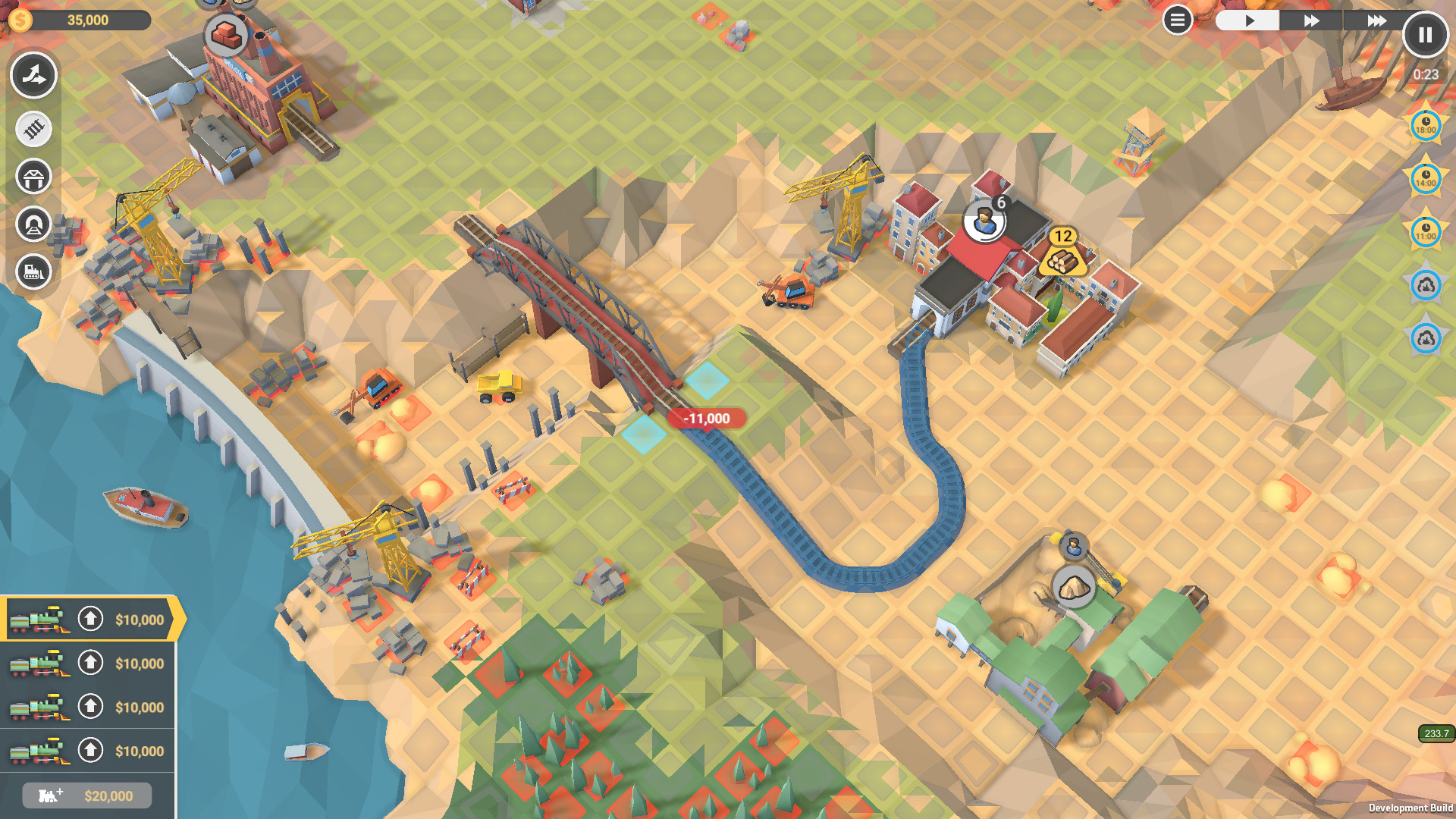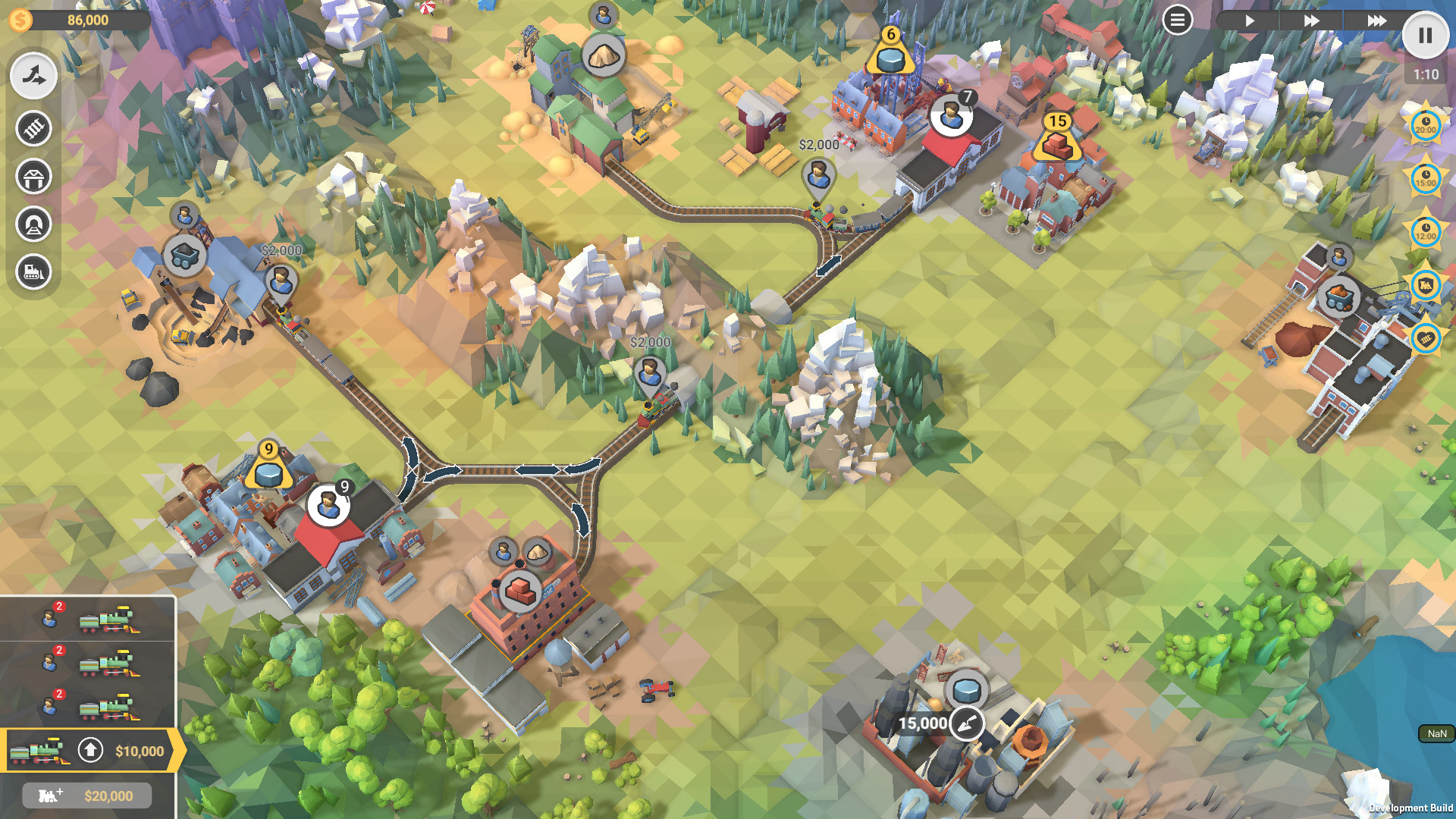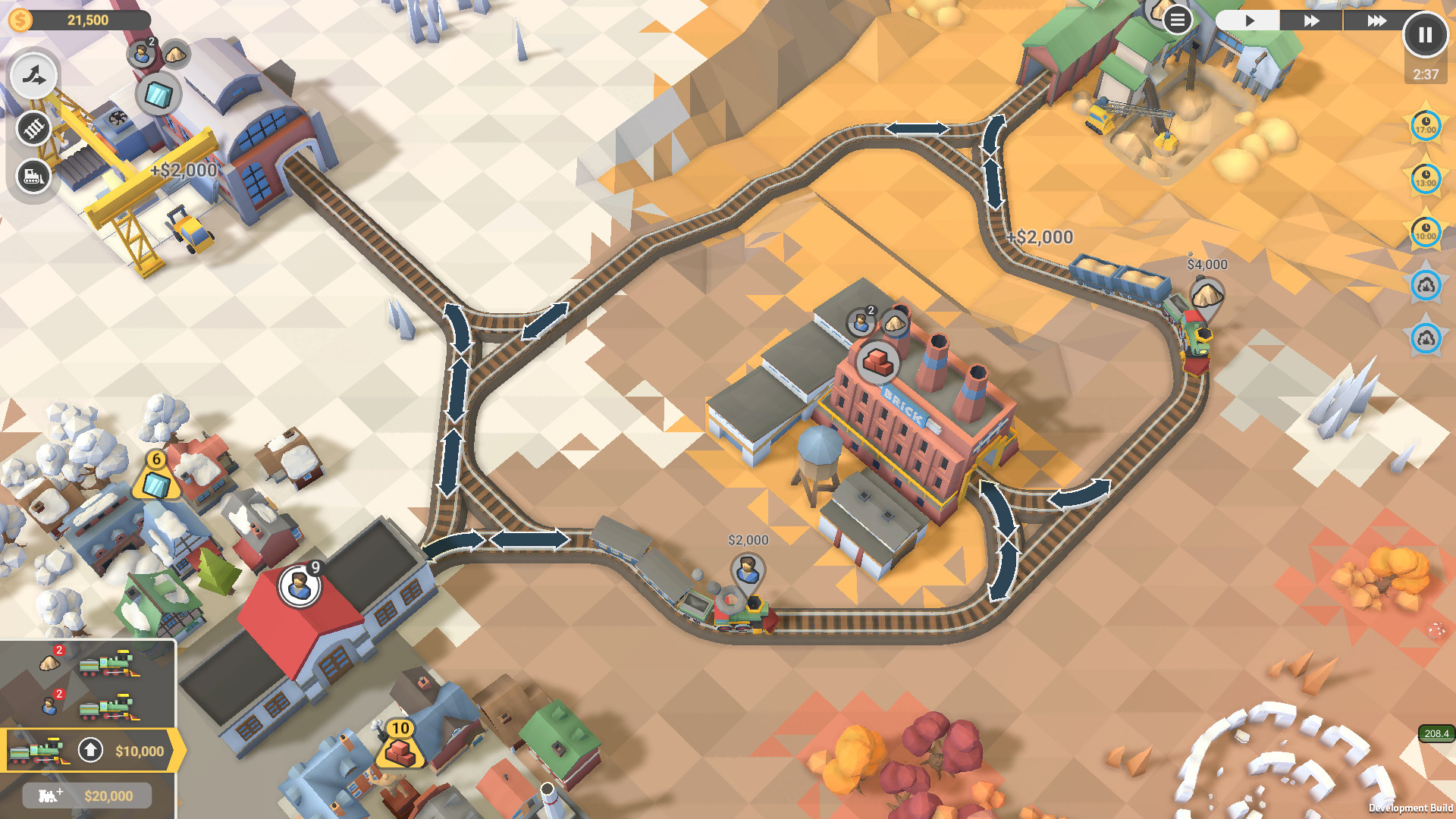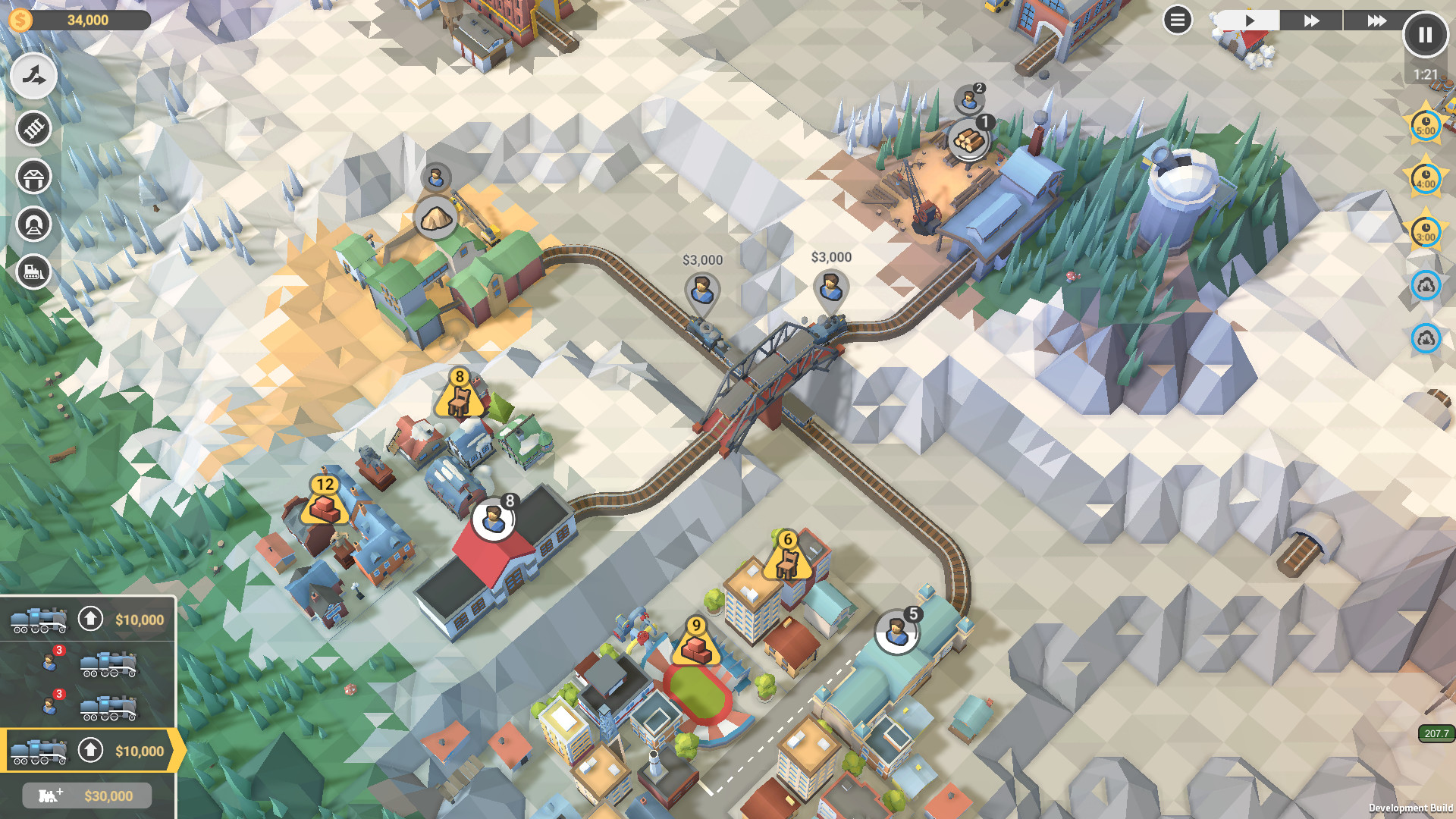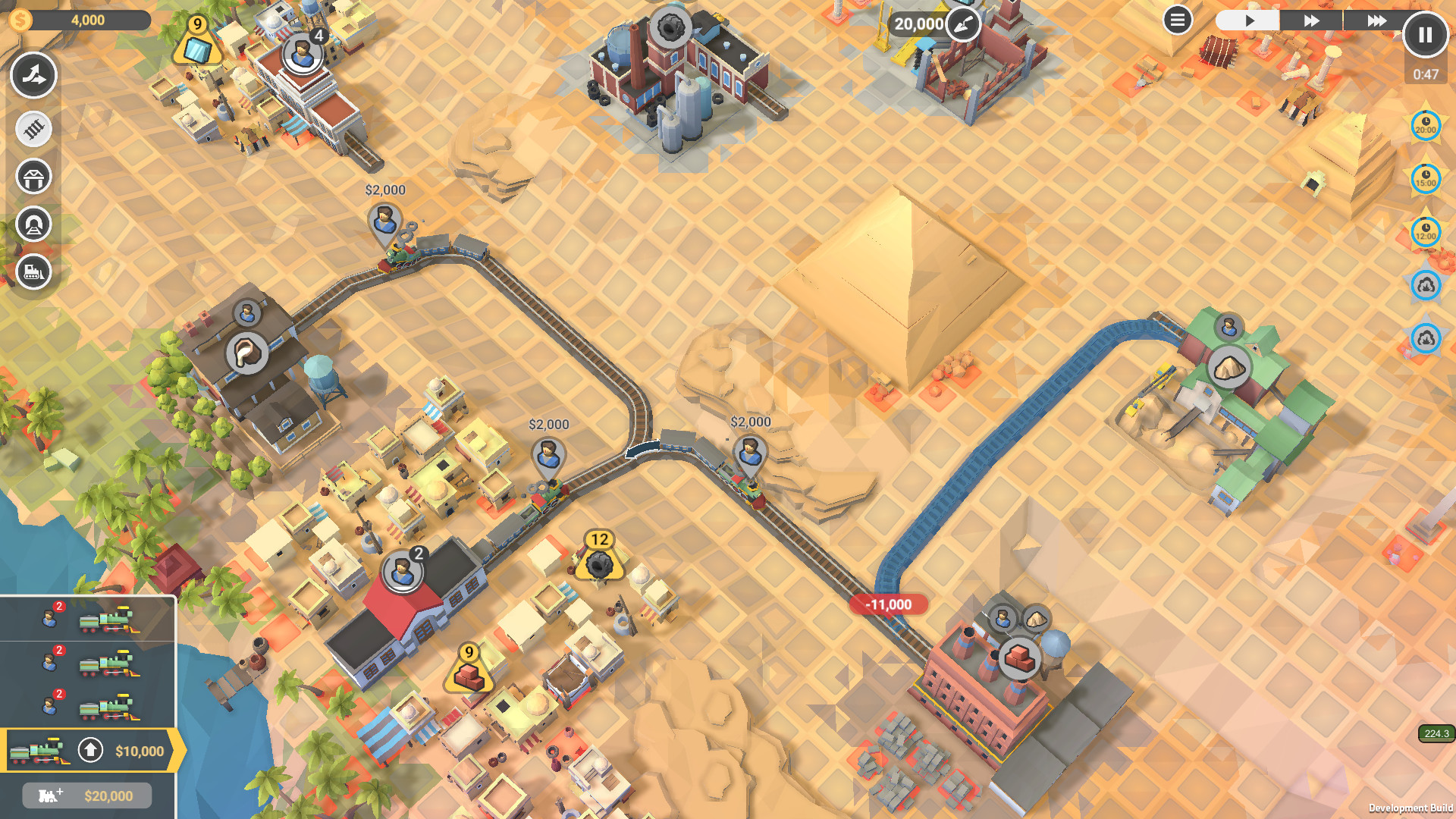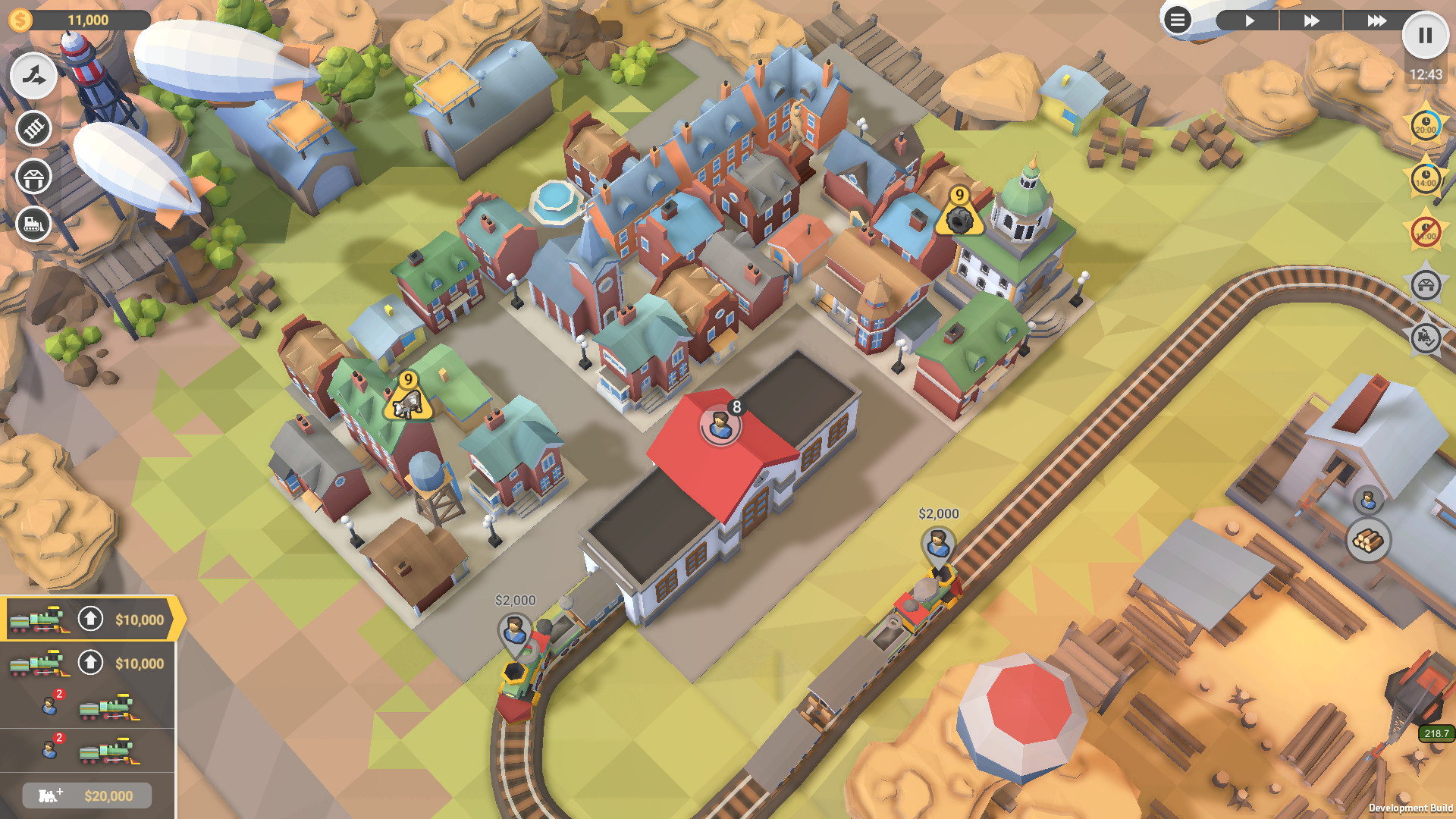Train Valley 2 is a train tycoon puzzle game. Take your railroad company from the days of the Industrial Revolution and into the future, meeting the needs of the valley's cities and industries. Build railroads, upgrade your locomotives, and keep your trains on schedule without delays or accidents. All aboard — the train is leaving the station!

Enjoy engaging and addictive gameplay, combining puzzle micromanagement with tycoon elements.

Discover the history of railroads in elegant low-poly graphics!

Keep your trains running on schedule across 50 levels in Company Mode (*the Early Access version currently offers 20).

Upgrade your stock of locomotives and acquire advanced engines, with 18 models to unlock (*the Early Access version currently features 4).

Produce and ship increasingly sophisticated goods in more than 35 types of train cars (*the Early Access version currently offers 21).

Jump into our Level Editor with Steam Workshop integration and create your own Valleys - or play levels from other players!

Create your own mods with custom locomotives, train cars, industries, and resources from your favorite time or universe.

Enjoy engaging and addictive gameplay, combining puzzle micromanagement with tycoon elements.

Discover the history of railroads in elegant low-poly graphics!

Keep your trains running on schedule across 50 levels in Company Mode (*the Early Access version currently offers 20).

Upgrade your stock of locomotives and acquire advanced engines, with 18 models to unlock (*the Early Access version currently features 4).

Produce and ship increasingly sophisticated goods in more than 35 types of train cars (*the Early Access version currently offers 21).

Jump into our Level Editor with Steam Workshop integration and create your own Valleys - or play levels from other players!

Create your own mods with custom locomotives, train cars, industries, and resources from your favorite time or universe.
Locomotives 4-2 (The Rabbit) and 4-3 (The Chief)
 (Photo from Wikipedia )
(Photo from Wikipedia )
Almost 400 of these locomotives were produced during the 70s. Thanks to its high power and speed (topped at 140 km/h), its ability to work in multiple with engines from other classes, and a low-speed gear capable of pulling heavy freight trains, it quickly became the most important locomotive in West Germany. With the increasing electrification of railway lines and the popularization of diesel multiple units (trains that have the engines incorporated and therefore do not require separate locomotives), the DB Class 218 progressively focused mostly on freight trains. Also, after the reunification of Germany, it proved useful for the still unelectrified lines in East Germany. For one reason or another, even if they are slowly being replaced by more modern machines, these veteran engines are still in use!
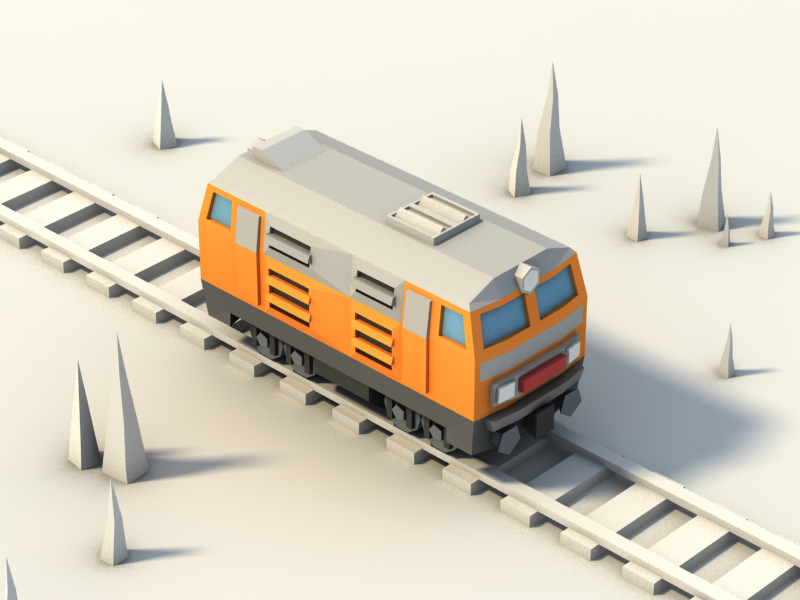
The Class DB 218 was revised in the 80s with the addition of two new exhaust devices, two chimneys that granted the new 218s the nickname of rabbits because they looked like, well, two floppy ears. Our in-game version (which has the same name), however, is more inspired by the first version of this locomotive. It keeps the distinctive solid and bulky shape, as well as its small windows a machine that states clearly that it is 100% ready for any kind of hard work!
 (Photo from Wikipedia )
(Photo from Wikipedia )
The EMD F40PH is still in service in commuter railroads, especially in Canada, where they are the main pillar of the Canadian railway company Via Rail long-distance trains up to the point that it was featured in the Canadian $10 bill! More than 500 of these engines have been produced (including variants), and its longevity has led to all kinds of conversions, additions, rebuildings, and customizations. They have been used mostly for long-distance trains, but also in short-line and freights. The Trains magazine estimated that each of them has traveled 282,000 km per year on average!
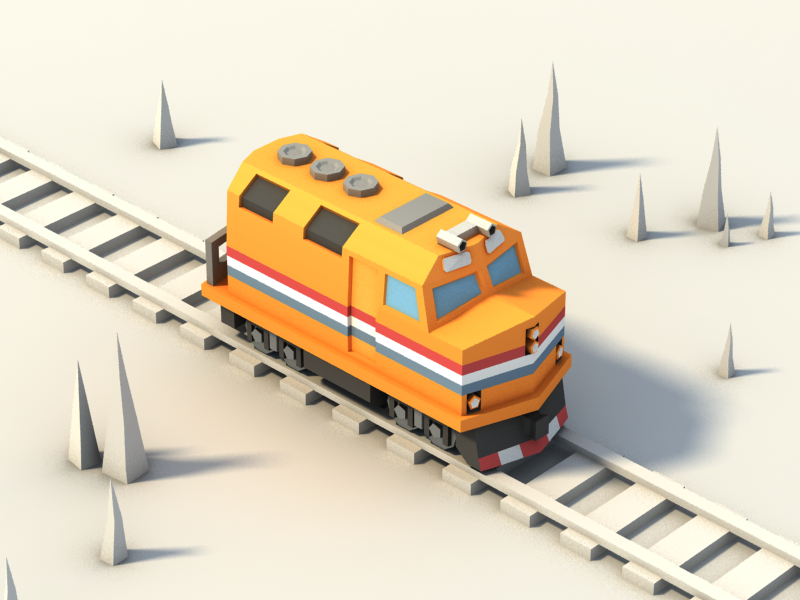
In its in-game cousin (his name is The Chief) you can find the strong lines of its front and the curved windows that make it look, if not angry, at least starkly determined to get to its destination no matter what. A serviceable and powerful train that picked up the gauntlet when the opportunity came, The Chief rose to the challenge and became a staple for trains in North America.
With this locomotive, we end the diesel era. As we will see in the next post in this series, in the 80s the most important railway lines started to be electrified, and with that, the new electric trains started to become the standard. Well discover this new era in the history of locomotives next week until then, enjoy the ride! tv2conductor
Hello, history lovers! We continue our chronicle and today we will continue to discover the fourth generation of diesel locomotives. The German and American diesel locomotives are waiting for us, very important guys in their generation. These workhorses are not chilling in museums, unlike most of their steam ancestors. Let's go!
DB Class 218
This locomotive is a familiar sight for all German train lovers: the definitive (and most numerous) revision of the most popular family of diesel locomotives in Germany, it became the backbone of the West Germany diesel-powered train fleet from the 70s up to the reunification. The DB class 218 had a B-B wheel configuration (two bogies with two powered axles under the unit). Its main feature in comparison with its predecessors in the V 160 family was its more powerful engine that allowed for a single engine to provide tractive power and electrical train heating, thanks to an attached generator (while the DB Class 217 needed a separate engine for heating). (Photo from Wikipedia )
(Photo from Wikipedia )Almost 400 of these locomotives were produced during the 70s. Thanks to its high power and speed (topped at 140 km/h), its ability to work in multiple with engines from other classes, and a low-speed gear capable of pulling heavy freight trains, it quickly became the most important locomotive in West Germany. With the increasing electrification of railway lines and the popularization of diesel multiple units (trains that have the engines incorporated and therefore do not require separate locomotives), the DB Class 218 progressively focused mostly on freight trains. Also, after the reunification of Germany, it proved useful for the still unelectrified lines in East Germany. For one reason or another, even if they are slowly being replaced by more modern machines, these veteran engines are still in use!

The Class DB 218 was revised in the 80s with the addition of two new exhaust devices, two chimneys that granted the new 218s the nickname of rabbits because they looked like, well, two floppy ears. Our in-game version (which has the same name), however, is more inspired by the first version of this locomotive. It keeps the distinctive solid and bulky shape, as well as its small windows a machine that states clearly that it is 100% ready for any kind of hard work!
EMD F40PH
Amtrak, the operator of most intercity passenger trains in the USA, introduced the EMD SDP40F a diesel-electric train intended to replace the aging diesel locomotives inherited by the company when it was founded, and therefore to become the most important engine for passenger trains in the US. However, in just a few years several derailments started to break the confidence of the company in this locomotive. The weight of the steam generators used for heating, the vibration of baggage cars whatever the reason, this machines derailed one time after another, and railroads started banning it for good until Amtrak decided to move on to another diesel locomotive that was in use on short-distance lines: the EMD F40PH. With its B-B wheel configuration, a high power output, and a maximum speed range of 166 to 177 km/h, it rose to the challenge so well that the F40PH were in production until as late as 1998. (Photo from Wikipedia )
(Photo from Wikipedia )The EMD F40PH is still in service in commuter railroads, especially in Canada, where they are the main pillar of the Canadian railway company Via Rail long-distance trains up to the point that it was featured in the Canadian $10 bill! More than 500 of these engines have been produced (including variants), and its longevity has led to all kinds of conversions, additions, rebuildings, and customizations. They have been used mostly for long-distance trains, but also in short-line and freights. The Trains magazine estimated that each of them has traveled 282,000 km per year on average!

In its in-game cousin (his name is The Chief) you can find the strong lines of its front and the curved windows that make it look, if not angry, at least starkly determined to get to its destination no matter what. A serviceable and powerful train that picked up the gauntlet when the opportunity came, The Chief rose to the challenge and became a staple for trains in North America.
With this locomotive, we end the diesel era. As we will see in the next post in this series, in the 80s the most important railway lines started to be electrified, and with that, the new electric trains started to become the standard. Well discover this new era in the history of locomotives next week until then, enjoy the ride! tv2conductor
[ 2019-03-24 13:25:19 CET ] [Original Post]
Minimum Setup
- OS: Ubuntu 12.04+ or SteamOS+
- Processor: 2.2 GHz CPUMemory: 2 GB RAM
- Memory: 2 GB RAM
- Graphics: ATI Radeon HD 2400 or NVIDIA GeForce 7600
- Storage: 1 GB available space
Recommended Setup
- OS: Ubuntu 12.04+ or SteamOS+
- Processor: 2.2 GHz CPUMemory: 4 GB RAM
- Graphics: NVIDIA GeForce GTX1050 Ti or higher
- Storage: 1 GB available space
GAMEBILLET
[ 6515 ]
GAMERSGATE
[ 4456 ]
MacGamestore
[ 2906 ]
FANATICAL BUNDLES
HUMBLE BUNDLES
by buying games/dlcs from affiliate links you are supporting tuxDB

